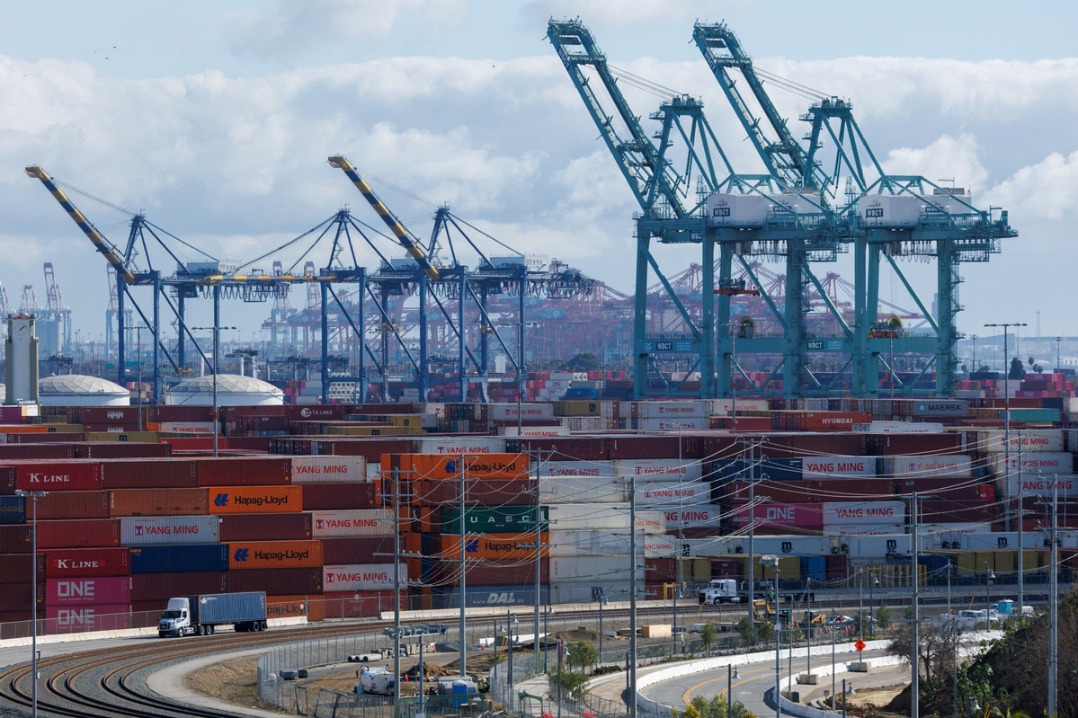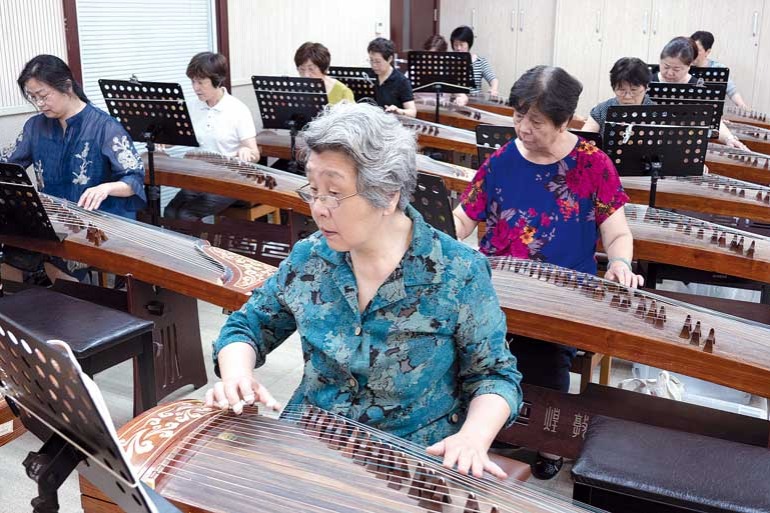New driving force


The Global South is becoming increasingly important in shaping global economic and geopolitical dynamics
The Global South is a very significant economic and demographic force. The G77 as the largest grouping of the Global South, for example, accounts for about 18 percent of global GDP. Moreover, it is projected that their combined GDP will grow by 4.2 percent annually on average through 2029, compared with 1.9 percent for advanced economies. South-South trade, already accounting for about one-third of global trade, is expanding faster than other trade flows. Between 2007 and 2023, South-South trade more than doubled from $2.3 trillion to $5.6 trillion, according to the United Nations Conference on Trade and Development. In the meantime, almost two-thirds of the world's working age population lives in the Global South and more than 40 percent of the world's energy transition metals are produced here. As a result, more Global South countries are likely to join the ranks of the world's largest economies.
The Global South is also bringing common positions to the fractured global order. Though Global South countries are highly diversified in terms of geography, political system, development stages and culture, they also share some common goals and approaches.
First, the Global South prioritizes economic growth and poverty reduction. Focusing on growth keeps most of the countries neutral in today's geopolitics and geoeconomics. They largely adopt export-led strategies to power GDP growth and are thus eager to safeguard the open and multilateral trade system. They are also committed to upgrading existing industries, establishing new ones and capturing more value. Though the growth pathways are diverse in the Global South and face significant challenges, they expect to achieve growth and value creation through leveraging their comparative advantages to enhance domestic ecosystems, create jobs and build more competitive economies.
Second, Global South continues to expand and deepen its trade footprint. An extensive network of free trade agreements is bolstering economic cooperation within the Global South. These include intraregional agreements and mechanisms such as the Association of Southeast Asian Nations, the Regional Comprehensive Economic Partnership, China-ASEAN Free Trade Area and Mercosur. Most recently, China and ASEAN concluded the negotiations to further refine their trade agreement to include the digital and green economy and other new industries. The version 3.0 of the free trade agreement will inject greater certainty into regional and global trade and play a leading and exemplary role for countries to adhere to openness, inclusiveness and win-win cooperation. China is now the top trade partner for 63 Global South nations, including Brazil, Chile, Saudi Arabia and Kenya, and the leading investor in many Global South economies. In the meantime, Global South countries are also trading smarter by moving from cost-driven to value-driven models. Countries such as Indonesia and Chile are leveraging their natural resources to create broader industries and value chains.
Third, Global South countries have adopted a pragmatic approach to climate change. They are facing disproportionate damage from climate events such as extreme heat, drought, flooding, wildfires, though they have contributed far less greenhouse gas historically. They are also confronting intensifying sustainability standards pressure from advanced economies, such as the carbon border adjustment mechanism imposed by the European Union. Nevertheless, Global South countries are prioritizing solutions that benefit both their economies and their environment. Given their high dependence on fossil fuel exports and energy-intensive industrialization, these countries are sticking to growth-centric policies and a gradual energy transition. It should be noted that many of Global South countries have natural advantages in low-carbon development. The vast forests and wetlands across Southeast Asia, Africa and the Amazon are the world's largest carbon sinks. To unleash such potential and ensure equity and fairness, sustained international support is necessary.
Fourth, the Global South intends to reform global economic governance in a more equitable and fairer manner. For example, the structure of the Bretton Woods Institutions still reflects the global distribution of power in the mid-20th century, with the United States enjoying the dominant superpower and European countries having a privileged position. Partly due to unfavorable ratings by rating agencies, Global South countries obtain loans at significantly less favorable terms than countries in the Global North and debt repayment limits the scope for action available to governments. As a result, recent years have witnessed the establishment or better use of Southern-led multilateral development banks such as the Asian Infrastructure Investment Bank and the New Development Bank, and increasing use of local currencies in trade.
Additionally, the Global South refuses to choose sides in geopolitical competition. Many of Global South countries are using their geopolitical and economic leverage to achieve key goals, such as strategic investments and the acquisition of technology. They are championing multi-alignment or "like-minded internationalism" through "BRICS Plus", ASEAN and other platforms to shape the future global order, and diversifying their trade partnerships. Brazil, for example, is strengthening ties with China, but also collaborating with the EU on the environment through initiatives such as the Amazon Fund and strengthening trade ties through deals such as the EU-Mercosur Partnership Agreement.
To seize the moment in the global shift to a multipolar order, Global South countries could take the following policies to facilitate opportunities and address challenges.
First, Global South countries need to diversify their exports, reduce trade costs through measures such as customs reforms and trade facilitation, and invest to build brands and improve quality. Talent and skills transfer could also be further encouraged and facilitated.
Second, Global South countries invest far less than advanced economies in R&D as a percentage of GDP. They need to invest more in innovation and capacity building. Governments need strategies to foster a sound environment for early-stage risk capital and innovation and invest more in digital infrastructure, innovation hubs, and public-private partnerships. Development of human capital through science and technology education, recruitment of overseas talent, and incentives for employers to upgrade workers' skills, is also essential.
Third, Global South countries must embrace green and inclusive development. Despite backsteps by some advanced countries, sustainability is still the trend and can become a powerful competitive edge. Leadership in the green transition can unlock new market opportunities, establish new trade routes and mitigate risks. Sustainable practices are also necessary to maintain access to certain advanced markets and reduce conflicts within the Global South. Balanced approaches through redistributive policies, social safety nets and regional development programs can help reduce social unrest, and create a stable investment environment.
Fourth, Global South countries should work together for a fair and equitable governance system. Global South countries can further press ahead with improving governance in economic, trade, financial, digital and ecological fields through policy coordination, innovative financing, and technology and capacity-building support.
The author is vice-president of the Center for International Knowledge on Development. The author contributed this article to China Watch, a think tank powered by China Daily.
Contact the editor at editor@chinawatch.cn.


































